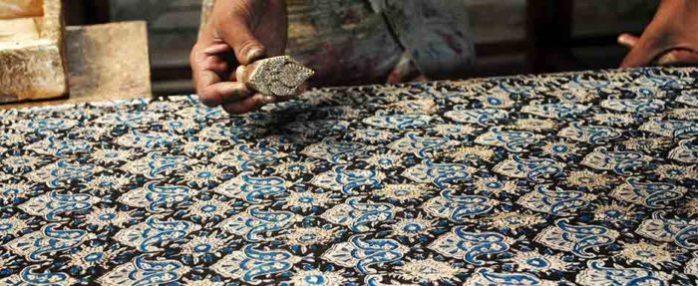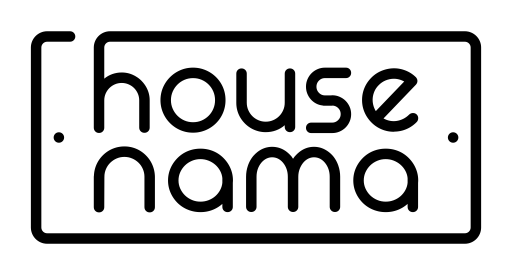
The Art of Hand Block Printing #HandmadeInIndia
Share
Hand block printing is a form of dying and colouring a fabric using wooden blocks. Crafts-persons use wooden or metal blocks to create beautiful designs. Sometimes linoleum blocks are also used. India is one of the largest manufacturers and exporters of block printed fabric in the world.
Techniques of Block Printing in India
Direct Printing: In the case of direct printing, the cotton or silk cloth is first bleached. Then the fabric is dyed. Thereafter, the fabric is printed using carved blocks, first the outline blocks, then the ones to fill colour.

Direct Block Printing in process.
Resist Printing: In this method, areas that are to be protected from the dye are covered with a mixture of clay and resin. The dyed fabric is then washed. The dye spreads into the protected areas through cracks, producing a rippled effect. Block prints are then used to create further designs.
Discharge Printing: In this technique, the fabric is dyed. Then, a chemical is used to remove the dye from the portions that are to have designs in a different colour. These portions are then treated, so they may be re-coloured.
The Process of Block Printing in India
The fabric to be printed is first washed free of starch.
If tie-dyeing is required, this is done before the printing process. In case fabric is dyed, it is washed thereafter, to remove excess colour. It is dried in the sun.
The fabric is then stretched over the printing table and secured with pins.
Colour is mixed separately and kept ready. So are the blocks. The blocks are made of teak wood and hand-carved. They are soaked in oil for 10-15 days to soften the timber.

Newly carved blocks have to be kept soaked in oil for a fortnight to soften the timber.
The colour is kept in a tray which rests on another tray that contains a liquid made of glue and pigment binder. This gives the colour a soft base and permits even spreading of colour on the block.
When printing begins, the colour is first evened out in the tray. Then the block is dipped in the outline colour.
The block is pressed down hard on the fabric, to make a clear impression. Thereafter, other blocks are used to fill in colour.
Once the fabric is printed, it is dried in the sun. It is then rolled in newspaper to prevent the fabric layers from sticking to each other.
The fabric is then steamed.
Thereafter, it is washed in water and dried in the sun.
Ironing is the last stage.
Block Printing Explained By Artisans from Jaipur
In Gujarat, this form of hand printing has been practiced and perpetuated by the Paithapur families. They make intricate blocks, and print their textiles using the mud resist-printing method. These prints are called Sodagiri (trader) prints.
Dhamadka village in Gujarat is known for a block printed fabric called Ajrakh. The popular designs of block printing in this village are geometric. The artisans use natural colours such as red from the madder root, black from a rusty iron solution and blue from indigo.

Ajrakh block printing in Gujarat
In Kutch, the popular patterns are black and red designs of birds, animals, and dancing girls. The saris of Ahmedabad and Baroda have large mango patterns against a red or blue background.
The other well known centres for block printing in Gujarat are Bhavnagar, Vasna, Rajkot, Jamnagar, Jetpur and Porbandar.
In Rajasthan, block printing of colourful prints of birds, animals, human figures, gods and goddesses are popular. The important centres for this form of hand printing are Jaipur, Bagru, Sanganer, Pali and Barmer.
Sanganer is famous for its Calico printed bed covers, quilts and saris. In Calico printing, the outlines are first printed, and then the colour is filled in. Bold patterns and colours are popular. They are printed repeatedly in diagonal rows. Doo Rookhi printing is also famous here. In this technique, artists print on both sides of the cloth.

Stunning Bagru block printing in Rajasthan
Bagru is famous for its Syahi-Begar prints and Dabu prints. The former are designs in a combination of black and yellow ochre or cream. The latter are prints in which portions are hidden from the dye by applying a resist paste.
Barmer is known for its prints of red chilies with blue-black outlines, surrounded by flower-laden trees. The other famous prints are of horses, camels, peacocks and lions, called Sikar and Shekahawat prints.
The Block Printing from Punjabis not as famous as its Rajasthani counterpart, but is still merit worthy. It was the art of a group of textile workers called Chhimba . The designs were usually floral and geometrical. Today, traditional designs have been displaced, and vegetable dyes have been replaced by chemical ones. The colours are light and pastel. The motifs are usually mangoes, peacocks and nets.

Artisan block printing in Punjab.
In Bengal, the art of block printing was introduced at the beginning of the twentieth century. Since then, Bengal’s block printing artists have built on the traditional designs and created several of their own. In West Bengal, Serampur is the centre of block printing. It is well-known for its bold and vibrant patterns.
In Andhra Pradesh, the block printing method is applied in the creation of the exquisite Kalamkari Painting. Kalamkari, as the name suggests, is artwork (kari) created with a pen (kalam). It is a combination of hand painting and block printing.
The two major centers of Kalamkari art are Sri Kalahasti and Masulipatnam.
The Masulipatnam designs are Iranian in character; the most popular motifs are Persian motifs like trees, creepers, flowers and leaf designs. In Masulipatnam, Kalamkari work is mainly done on bed covers, curtains and garments, using a combination of wooden block printing and hand painting.
In Sri Kalahasti Kalamkari work, temples are a major source of inspiration. It was because of the demand for scrolls and wall hangings with Hindu mythological stories, that Kalamkari flourished in this village. These themes are painted in the panels, and there is a script painted along the border. The popular motifs are Hindu gods and goddesses. The work is done entirely with a brush-like pen.

Kalamkari Hand Block Print On Cotton Fabric
Block Printing in India is also practiced in the states of Madhya Pradesh, Uttar Pradesh and Maharashtra.
FAQs about Hand block printing:
How long does it take to create a block? The process of creating the stamp can take 7 to 10 days, depending on the complexity of the design.
How many blocks are used on one print? Each colour has its own block, so the print to the right for example requires 3 different blocks.
How long do the blocks last? If the block is used on a regular basis, which would be about 300 meters a month, they will last about 8 months. However, even if they are not used, after several years the wood deteriorates and the block will not print as well.
How many meters can be printed in a day? A skilled artist can print 20 meters a day of a one- block design or 4 meters a day of a 4 block design.
What is the inspiration behind the blocks? Most of the blocks are based on Indian mythology or inspired by nature and animals.
Can any colour be produced? Not if the colours are made from vegetable dyes. If chemical dyes are used, yes.
How can these fabrics be cared for? Machine wash with mild detergent in cold water, wash colours separately, do not soak and do not dry in direct sunlight
